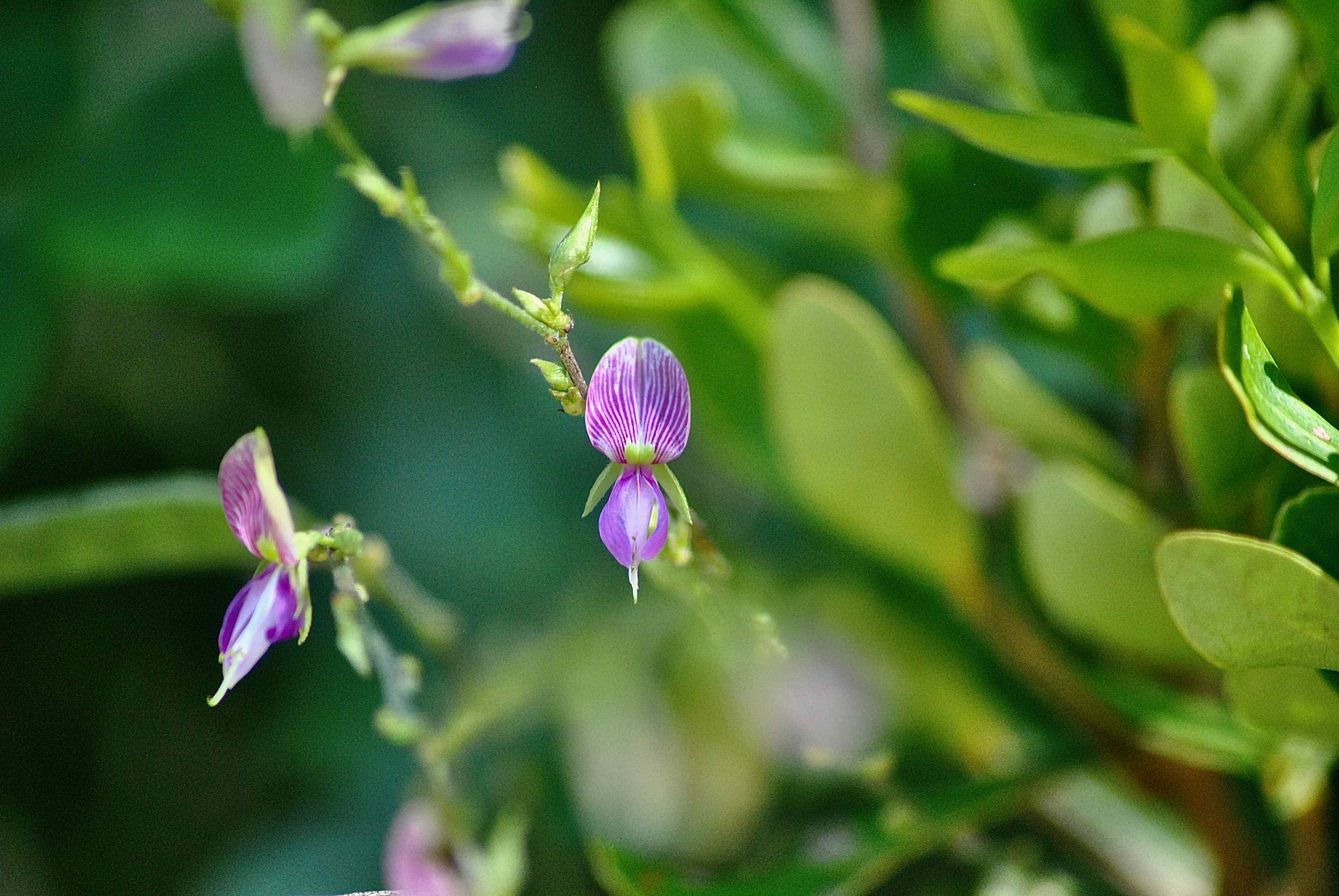
Florida hammock milkpea, photographed at Crane Point Hammock, Marathon, Monroe County, in 2013.
Milkpeas are notoriously difficult separate one from another, but this milkpea makes it relatively easy. The clue is in the scientific name, Galactia striata.
The flowers of Florida hammock milkpea are striped. In plain Latin, Striata. The flowers of other milkpeas are not.
As might be expected given the name, Florida hammock milkpea is a Florida native generally found in hammocks — wooded areas. It’s found in Miami-Dade and Monroe counties on the Atlantic coast and in counties as far north as Manatee along the Gulf. Florida hammock milkpea’s natural range includes a handful of Texas counties.
It’s also found throughout the Caribbean, Mexico, Central America, South America, parts of Africa from Sudan to Mozambique, Asia from India to China to the Philippines to Borneo and Australia.
Like all milkpeas, Florida hammock is a climbing or trailing vine with compound leaves, each with three oval shaped leaflets that are dark green above, paler green below. The leaves are arranged alternately along the stem.
Each stem can be as long as 10 feet. It twines its way around its neighbors rather than clambering over them or grabbing onto them via tendrils.
The flowers can vary in shade, lilac to pink to blue to almost purple, but the key to identifying Florida hammock milkpea is the upper, or banner petal. It has a mix of vertical white stripes not seen in other milkpea species. A mature inflorescence, or flower stem, can have as many as 15 blooms on it. Florida hammock milkpea flowers year round.
Like peas, generally, the fruit is a pod, each usually with six to 12 seeds, but can have as few as one.
As the name suggests, it is a plant of wooded areas, or hammocks. It takes to shaded or partially shaded places. It is somewhat drought tolerant and salt tolerant.
It is a host plant for the cassius blue butterfly, the long-tailed skipper, zestos skipper and zarucco duskywing butterflies.
According to the Royal Botanical Garden Kew, Florida hammock milkpea is used medicinally in places; it’s also used as forage.
Florida hammock milkpea is a member of Fabaceae, the pea family. Crane Point Hammock
